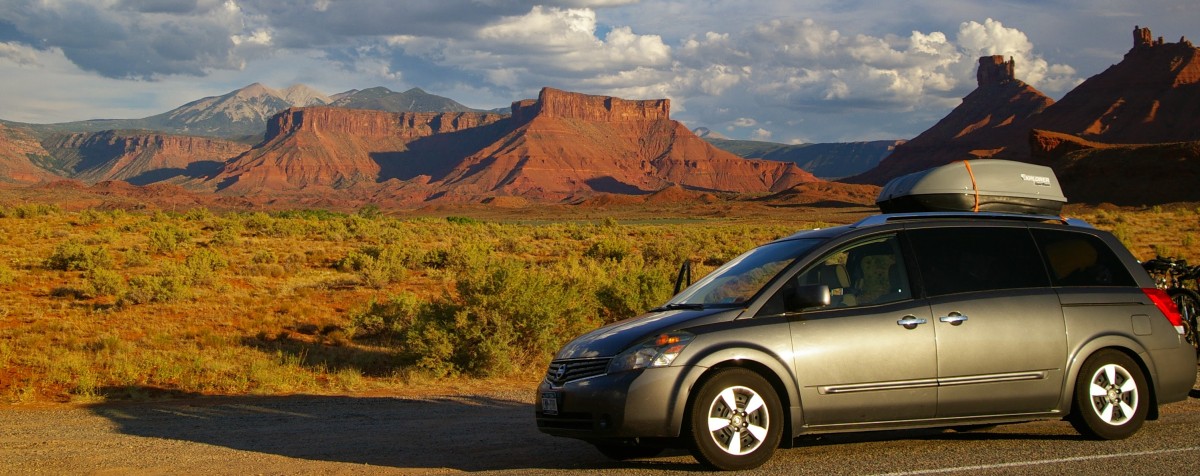From a distance it looks like yet another catholic church, among hundreds of others in this small town. Except, it’s not in town. It sits high above it, on top of a small hill. Build in the sixteenth century, the church is cute – in a sense church can be considered cute, but not outstanding. And yet, it draws tourists from all over the World in thousands every year. For the longest time, I couldn’t understand why…
The town of Cholula is just a few miles west from the city of Puebla, one could probably consider it it’s suburb. Therefore, despite the usual morning traffic in the center, it only took us few minutes to get there from the hotel we stayed at the night before. Traveling on the highway, we’ve noticed a large mountain on the left. Despite it’s peak being covered in clouds, we’ve noticed something familiar. The top of the mountain was covered with…snow! What so surprising about it…? Well, nothing in particular. After all in was the beginning of January, and for most of our friends in Poland and upstate New York, that’s a very common view that time of year. Except, we were not in Poland, nor in the US. We were in central Mexico, where temperatures, even at night rarely fell below few degrees Celsius (about 40 degrees Fahrenheit). This was definitely a tall mountain. And the clouds also looked a bit funny. Instead of passing through the peak, they seemed to linger around way too long. Turns out, they have a good reason to do so. They are no ordinary clouds, but.. smoke, and the mountain is an active volcano! It’s name is Popocatépetl and it rises to 5426 m (17802 ft) above sea level.
Cholula is said to be a town of 365 churches – one for every day of the year. On our way in, we passed at least a dozen of them. Even if the legendary number is exaggerated (in reality here are only 37 churches), the number of catholic temples in a town of roughly 120 thousand people is overwhelming (159 including chapels). Which makes the allure of the hill top sanctuary even more mysterious. We parked the car on a nearby private lot, and started to climb the hill. It’s neither very high, nor steep and it apparently serves as a great exercise spot for local athletes. I counted two of them, vomiting in public, exhausted by their workout. Must be a Mexican thing…
The sanctuary at the top of the hill is a sixteenth century church. All yellow, with white accents on the outside and the usual tons of gold and paintings on the inside. Build in 1575, the basilica of Nuestra Señora de los Remedios has great 360 degree views over the valley of Puebla. But what’s significant about this building is not it’s history, or the views. It is its localization. The hill on the base of the basilica is a man made structure. The church sits on top of… the largest pyramid of the ancient world! Turns out, the conquistadors, in the typical christian, loving and forgiving way build their temple on top of a “pogan” one, to reinforce their superiority over the indigenous people…

Only when we climbed down several flights of stairs, to the base of the “hill” on it’s opposite side, we realized the size and magnificence of that structure. The Great Pyramid of Cholula, also known as the Tlachihualtepetl is 450 by 450 meters (1480 by 1480 ft) on it’s base. With the height of 66 meters (217 ft), this structure is almost double the volume of the Great Pyramid of Giza (even though the Egyptian one is much taller, at over twice the height). The structure dates back to the 3rd century BCE and it’s architecture resemblances the buildings found in Teotihuacan, the most famous ancient city of Mexico. Apparently, in the ceramics found on the site during excavation, there are also traces of the Golf Coast civilizations. Especially El Tajin, which we visited just a few days earlier. To be honest, I couldn’t tell one from the other. Their art, all looks like hieroglyphs to me…
The main part of the pyramid is covered with dirt and therefore keeps the main chambers off limits for the tourists. The structure, considering it’s size, localization and significance to Mexican history, is fairly unknown. The excavation works started only in the the 1930’s, so fairly recently and could never been completed. That’s because of the small christian church sitting on top of the pyramid…
We have spent only few hours in Cholula and I wish we could have stayed longer. The pyramid itself deserves at least a full day, and then there are so many other attractions in town, we didn’t have time to see. Before lunch we waved the mysterious Tlachihualtepetl goodbye and headed towards it’s more acclaimed cousin, the Teotihuacan. Leaving town, I watched the smoke over Popocatépetl in my rear view mirror and I wondered how would this place have looked like today, if it wasn’t for the christian conquistadors, who destroyed so much of Mesoamerica’s culture.

